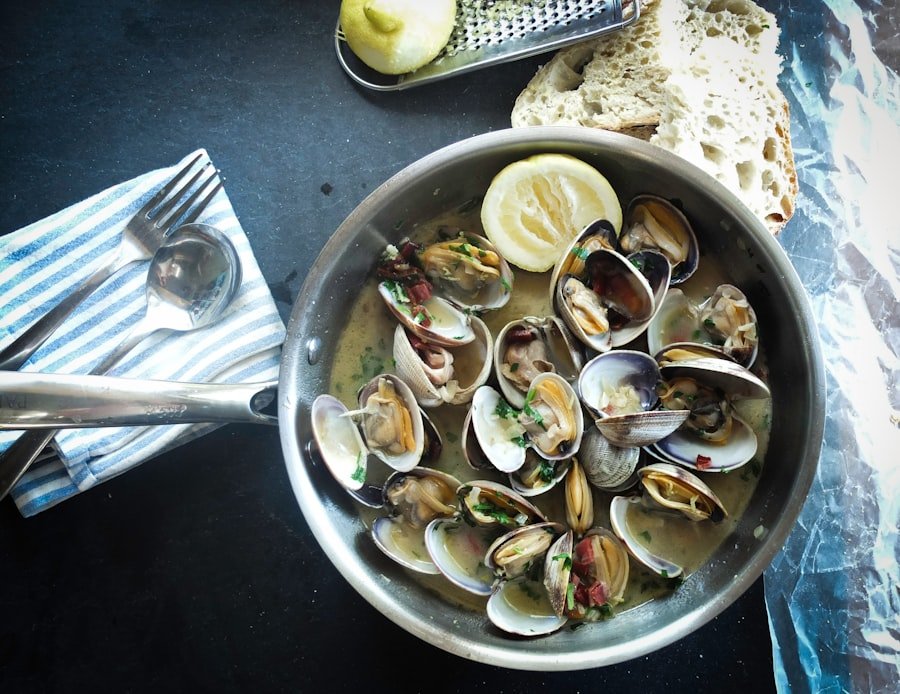Starting Your Own Dinner Club: A Step-by-Step Guide

A dinner club is a social gathering where people come together to enjoy a meal and each other’s company. It is a place where food, conversation, and networking come together to create a unique and enjoyable experience. Dinner clubs can take many forms, from casual potluck gatherings to more formal, organized events at a restaurant or private venue. The concept of a dinner club is to create a sense of community and connection through the shared experience of dining together. It provides an opportunity for people to meet new friends, network with like-minded individuals, and enjoy delicious food in a relaxed and welcoming environment.
Dinner clubs can also be themed, focusing on specific cuisines, cooking techniques, or dietary preferences. Some dinner clubs may have a rotating schedule where members take turns hosting the event and preparing the meal, while others may have a more structured format with professional chefs or caterers leading the culinary experience. Regardless of the format, the key elements of a dinner club are good food, good company, and a shared passion for the culinary arts. Understanding the concept of a dinner club involves recognizing the social and communal aspects of dining together, as well as the potential for creating a unique and memorable experience for participants.
Creating a Business Plan for Your Dinner Club
When creating a business plan for your dinner club, it’s important to consider the key elements that will contribute to its success. Start by defining your target audience and understanding their preferences and expectations when it comes to dining experiences. Consider factors such as location, cuisine, ambiance, and pricing to create a unique value proposition that sets your dinner club apart from others in the market. Next, outline your marketing and promotional strategies to attract members and build a loyal customer base. This may include social media campaigns, partnerships with local businesses, and special events or promotions to generate buzz and interest in your dinner club.
Financial planning is also crucial when creating a business plan for your dinner club. Calculate your start-up costs, including equipment, staffing, marketing expenses, and any necessary renovations or lease agreements for your chosen venue. Develop a pricing strategy that reflects the value of the experience you are offering while remaining competitive in the market. Consider potential revenue streams such as membership fees, ticket sales for events, and partnerships with food and beverage suppliers. Finally, outline your operational plan, including staffing requirements, menu development, and customer service standards to ensure a seamless and enjoyable experience for your members. By creating a comprehensive business plan, you can set clear goals and strategies for launching and growing your dinner club business.
Building an Investor List for Funding Your Dinner Club
Building an investor list for funding your dinner club involves identifying potential sources of capital to support your start-up or expansion plans. Start by researching local investors who have an interest in the food and beverage industry or who may be passionate about supporting community-based initiatives. Consider reaching out to angel investors, venture capital firms, or private equity groups that specialize in hospitality and entertainment ventures. Networking within your local business community can also help you connect with potential investors who may be interested in supporting your dinner club concept.
In addition to traditional investors, consider alternative funding sources such as crowdfunding platforms or small business grants that are specifically targeted towards food and beverage start-ups. These options can provide access to capital while also generating buzz and interest in your dinner club concept within the community. When building an investor list, it’s important to clearly articulate your business plan, financial projections, and the unique value proposition of your dinner club to attract potential investors. By building a diverse and engaged investor list, you can increase your chances of securing the funding needed to launch or expand your dinner club business.
Choosing a Location and Setting Up Your Dinner Club
| Location | Metrics |
|---|---|
| Accessibility | Distance from members’ homes, public transportation options |
| Ambiance | Atmosphere, decor, noise level |
| Capacity | Seating availability, private dining options |
| Cost | Price range, minimum spend requirements |
| Menu | Dietary options, variety, special requests |
Choosing a location and setting up your dinner club is a critical step in bringing your concept to life. Consider factors such as accessibility, visibility, and ambiance when selecting a venue for your dinner club. Whether you choose to operate out of a dedicated space, partner with existing restaurants or event venues, or host pop-up events at various locations, it’s important to create an environment that reflects the unique experience you want to offer to your members. Consider the layout of the space, seating capacity, kitchen facilities, and any necessary permits or licenses required to operate a dining establishment in your chosen location.
Setting up your dinner club involves creating a welcoming and functional space that enhances the dining experience for your members. This may include designing a comfortable dining area, setting up a bar or beverage service area, and ensuring that the kitchen facilities meet the needs of your culinary team. Consider decor elements that reflect the theme or concept of your dinner club, such as artwork, lighting, and table settings that create an inviting atmosphere for guests. Additionally, ensure that you have the necessary equipment and supplies to support your menu offerings and service standards. By carefully choosing a location and setting up your dinner club with attention to detail and creativity, you can create a memorable and enjoyable dining experience for your members.
Marketing and Promoting Your Dinner Club
Marketing and promoting your dinner club is essential for attracting members and building awareness within your community. Start by developing a strong brand identity that reflects the unique value proposition of your dinner club. This may include creating a compelling logo, website, and promotional materials that communicate the experience and benefits of joining your club. Utilize social media platforms to engage with potential members, share behind-the-scenes content, and promote upcoming events or special offers. Consider partnering with local influencers or food bloggers to generate buzz and reach new audiences who may be interested in joining your dinner club.
In addition to digital marketing efforts, consider hosting special events or collaborations with local businesses to showcase the experience of dining at your club. This may include themed dinners, cooking classes, or guest chef appearances that create excitement and interest in your club. Utilize email marketing campaigns to communicate with members and promote upcoming events or membership benefits. Consider offering referral incentives or loyalty programs to encourage existing members to bring new guests to the club. By implementing a comprehensive marketing strategy that leverages both digital and offline channels, you can build a strong brand presence and attract a loyal following for your dinner club.
Managing Finances and Operations of Your Dinner Club

Managing finances and operations of your dinner club involves careful planning and oversight to ensure the success and sustainability of your business. Start by establishing clear financial systems and processes to track revenue, expenses, and cash flow for your club. This may include implementing accounting software, hiring a bookkeeper or financial manager, and regularly reviewing financial reports to make informed decisions about pricing, menu offerings, and operational expenses. Develop a budget that accounts for all aspects of running your dinner club, including staffing costs, food and beverage supplies, marketing expenses, and any overhead costs associated with maintaining your venue.
In addition to financial management, it’s important to oversee the day-to-day operations of your dinner club to ensure a seamless and enjoyable experience for members. This may include hiring and training staff members who are passionate about hospitality and customer service. Develop standard operating procedures for kitchen operations, front-of-house service, and event management to maintain consistency and quality in all aspects of your club’s offerings. Regularly solicit feedback from members to identify areas for improvement and innovation within your club. By effectively managing finances and operations, you can create a sustainable business model that delivers value to members while achieving your financial goals.
Growing and Expanding Your Dinner Club Business
As your dinner club gains traction and builds a loyal following, consider opportunities for growing and expanding your business. This may include adding new membership tiers or benefits to attract a wider audience of food enthusiasts. Consider partnering with local businesses or organizations to host collaborative events or special promotions that introduce new audiences to the experience of dining at your club. Explore opportunities for hosting private events such as corporate dinners, celebrations, or team-building activities that leverage the unique atmosphere and culinary offerings of your dinner club.
In addition to expanding your membership base, consider diversifying revenue streams by offering additional services such as catering, cooking classes, or retail merchandise that align with the brand and values of your dinner club. This may involve developing strategic partnerships with local suppliers or artisans to create exclusive products or experiences for members. Consider opportunities for franchising or licensing your dinner club concept to bring the experience to new markets or locations. By continuously seeking opportunities for growth and expansion, you can elevate the impact of your dinner club business while creating new avenues for revenue generation and community engagement.
In conclusion, understanding the concept of a dinner club involves recognizing its potential as a social gathering that brings people together through food and conversation. Creating a business plan for your dinner club involves defining your target audience, outlining marketing strategies, financial planning, operational requirements, building an investor list involves identifying potential sources of capital to support start-up or expansion plans; choosing a location involves considering factors such as accessibility; marketing involves developing brand identity; managing finances involves establishing clear financial systems; growing involves adding new membership tiers or benefits; expanding involves diversifying revenue streams by offering additional services such as catering or retail merchandise. By carefully considering each aspect of launching and growing a dinner club business, you can create a unique and memorable dining experience that resonates with members while achieving sustainable growth and success in the hospitality industry.
If you’re interested in starting a dinner club, you may also want to check out this article on howtostart.digital that offers tips and advice on how to plan and organize a successful dinner party. The article provides insights on menu planning, invitations, and creating a welcoming atmosphere for guests. It’s a great resource for anyone looking to host a memorable and enjoyable dinner club gathering. Check it out here!
FAQs
What is a dinner club?
A dinner club is a group of people who regularly meet to share a meal together, often taking turns hosting the gathering in their homes or at a restaurant.
How do you start a dinner club?
To start a dinner club, gather a group of friends or acquaintances who are interested in participating. Decide on a schedule, theme, and any rules or guidelines for the club. Then, plan the first gathering and establish a rotation for hosting future dinners.
What are the benefits of joining a dinner club?
Joining a dinner club can provide opportunities to socialize, try new foods, and build friendships. It can also be a way to share the responsibility of cooking and hosting meals.
What are some popular dinner club themes?
Popular dinner club themes include international cuisine nights, potluck dinners, seasonal or holiday-themed meals, and cooking competitions.
How often should a dinner club meet?
The frequency of dinner club meetings can vary depending on the preferences of the group. Some clubs may meet monthly, while others may choose to gather more or less frequently.
What are some tips for hosting a successful dinner club gathering?
Tips for hosting a successful dinner club gathering include planning the menu in advance, considering dietary restrictions of the group, creating a welcoming atmosphere, and communicating any necessary details to the attendees.





